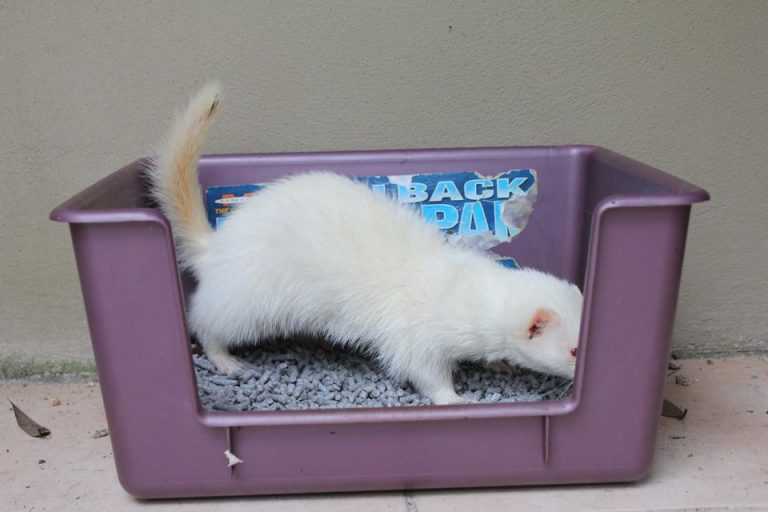1. How to Ferret Proof Your Living Room
Ferrets are curious and energetic creatures, which is why it's important to take special precautions when it comes to their safety in your living room. Here are some tips to help you ferret proof your living room and create a safe environment for your furry friend.
2. Tips for Creating a Safe Living Room for Your Ferret
When it comes to ferret proofing your living room, the first step is to get down on your hands and knees and look at your living room from your ferret's perspective. This will help you identify any potential hazards that you may have missed from a higher vantage point.
3. Essential Items for a Ferret Proof Living Room
Invest in some essential items to help you create a safe living room for your ferret. This includes a sturdy playpen or cage, a litter box, and plenty of toys to keep your ferret entertained and out of trouble.
4. DIY Ferret Proofing for Your Living Room
If you're on a budget, there are plenty of DIY options for ferret proofing your living room. For example, you can use PVC pipes to create a barrier around electrical cords or use baby gates to block off certain areas.
5. Common Hazards to Look Out for in a Ferret Proof Living Room
Some common hazards to look out for in a ferret proof living room include electrical cords, toxic plants, and small items that your ferret may chew on or swallow. Make sure to keep these items out of reach or secure them to prevent any accidents.
6. Creating a Play Area for Your Ferret in the Living Room
Ferrets are active animals and need plenty of playtime to keep them happy and healthy. Set aside a designated play area in your living room where your ferret can run, climb, and explore without getting into any trouble.
7. How to Train Your Ferret to Stay Out of Certain Areas in the Living Room
It's important to establish boundaries with your ferret to prevent them from getting into areas that are off-limits. This can be achieved through positive reinforcement training, such as rewarding them with treats when they stay out of certain areas.
8. Choosing Ferret Safe Furniture for Your Living Room
Some furniture materials, such as wicker or mesh, can be harmful to ferrets as they can get their claws or teeth stuck in them. Opt for furniture made of sturdy materials, such as wood or metal, to ensure your ferret's safety.
9. Keeping Electrical Cords and Wires Safe from Your Ferret in the Living Room
Ferrets are notorious for chewing on electrical cords and wires, which can be dangerous for both them and your electrical equipment. Use cord covers or hide cords behind furniture to prevent your ferret from accessing them.
10. Ferret Proofing Your Living Room on a Budget
Ferret proofing your living room doesn't have to break the bank. Look for budget-friendly options, such as using cardboard boxes as tunnels or creating DIY toys from household items, to keep your ferret entertained and safe without spending a fortune.
Ferret-Proofing Your Living Room: Tips for a Safe and Stylish Space for Your Furry Friends

Why Ferret-Proofing is Important
 Ferrets are curious and mischievous creatures, and their playful nature can often lead them into trouble. As a ferret owner, it is your responsibility to ensure their safety and well-being, especially in your living room, where they likely spend a lot of their time. Not only is ferret-proofing important for the safety of your pets, but it also helps protect your furniture and belongings from damage. With a few simple tips, you can create a safe and stylish living room that is perfect for both you and your furry friends.
Ferrets are curious and mischievous creatures, and their playful nature can often lead them into trouble. As a ferret owner, it is your responsibility to ensure their safety and well-being, especially in your living room, where they likely spend a lot of their time. Not only is ferret-proofing important for the safety of your pets, but it also helps protect your furniture and belongings from damage. With a few simple tips, you can create a safe and stylish living room that is perfect for both you and your furry friends.
Start with a Thorough Cleaning
 Before you begin to ferret-proof your living room, it is essential to start with a clean slate. Ferrets are attracted to clutter and can easily get themselves into tight spaces, so it is crucial to declutter and organize your space. Remove any items that could be harmful to your ferret, such as small objects they could swallow, electrical cords they could chew on, or plants that may be toxic to them. By starting with a clean and organized space, you can better identify potential hazards and create a safer environment for your ferret.
Before you begin to ferret-proof your living room, it is essential to start with a clean slate. Ferrets are attracted to clutter and can easily get themselves into tight spaces, so it is crucial to declutter and organize your space. Remove any items that could be harmful to your ferret, such as small objects they could swallow, electrical cords they could chew on, or plants that may be toxic to them. By starting with a clean and organized space, you can better identify potential hazards and create a safer environment for your ferret.
Invest in Ferret-Safe Furniture
 Ferrets love to climb and explore, so it is essential to invest in furniture that is safe for them to play on. Avoid furniture with sharp edges or gaps that your ferret could get stuck in. Opt for sturdy and stable pieces that can withstand their energetic nature. You may also want to consider covering your furniture with durable and washable fabrics to protect them from scratches and accidents. Additionally, avoid using glass furniture or decorations that can easily break and harm your ferret.
Ferrets love to climb and explore, so it is essential to invest in furniture that is safe for them to play on. Avoid furniture with sharp edges or gaps that your ferret could get stuck in. Opt for sturdy and stable pieces that can withstand their energetic nature. You may also want to consider covering your furniture with durable and washable fabrics to protect them from scratches and accidents. Additionally, avoid using glass furniture or decorations that can easily break and harm your ferret.
Block Off Potential Escape Routes
 Ferrets are notorious escape artists, and your living room may have many potential escape routes that you may not even notice. Make sure to block off any small openings, such as spaces under doors or behind furniture, with barriers or baby gates. This will prevent your ferret from escaping and getting into dangerous areas of your home.
Ferrets are notorious escape artists, and your living room may have many potential escape routes that you may not even notice. Make sure to block off any small openings, such as spaces under doors or behind furniture, with barriers or baby gates. This will prevent your ferret from escaping and getting into dangerous areas of your home.
Hide Wires and Cables
 Ferrets are naturally drawn to wires and cables, which can be dangerous for both them and your electronics. Make sure to hide any exposed cords and wires by using cord clips or covers. You can also invest in cordless electronics or use cable management systems to keep them out of your ferret's reach.
Ferrets are naturally drawn to wires and cables, which can be dangerous for both them and your electronics. Make sure to hide any exposed cords and wires by using cord clips or covers. You can also invest in cordless electronics or use cable management systems to keep them out of your ferret's reach.
Conclusion
 Ferret-proofing your living room may seem like a daunting task, but with the right precautions, you can create a safe and stylish space for your furry friends. Remember to declutter and organize your space, invest in ferret-safe furniture, block off potential escape routes, and hide wires and cables. By following these tips, you can ensure the safety of your ferrets and create a harmonious living space for both you and your pets.
Ferret-proofing your living room may seem like a daunting task, but with the right precautions, you can create a safe and stylish space for your furry friends. Remember to declutter and organize your space, invest in ferret-safe furniture, block off potential escape routes, and hide wires and cables. By following these tips, you can ensure the safety of your ferrets and create a harmonious living space for both you and your pets.















.jpg)

































































:max_bytes(150000):strip_icc()/GettyImages-157563721-581674ad5f9b581c0b41e537.jpg)







